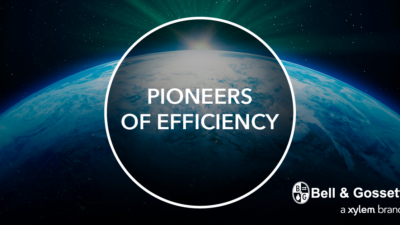Learn about HVAC designs incorporating economization solutions
As Applications Engineering Manager at Data Aire, Dan oversees a team that reviews and modifies HVAC designs submitted to the company by specifying engineers. In addition, he approves, releases and manages CAD drawings for mechanical, refrigeration and piping projects.
Q: Why are economization solutions important in today’s economy?
McInnis: Considering the rising energy costs, economization solutions have become a primary concern for mechanical engineers and data center managers I speak with. They must consider energy availability, especially from urban utility providers. Likewise, they need to think about how much money can be saved versus how much energy is being consumed.
In addition, I’m frequently asked about changing state codes and requirements, which force engineers to examine their application designs to assure they meet current standards. It’s become apparent, from the interactions Data Aire has, that our customers are seeking an efficient precision cooling system that can greatly reduce their total cost of ownership.
Q: When is economization effective and what should specifying engineers take note of when choosing between an airside or waterside economizer or a pumped refrigerant option?
McInnis: During the cooler months of the year, in many locations, the outdoor ambient air is cooler than the air in the building. Economization is accomplished by taking advantage of that temperature difference between indoor and outdoor ambient conditions, rather than running compressors to provide the cooling. Airside economization can be accomplished directly by pulling that cool or dry air straight into the building, which is the simplest and most efficient option in many cases.
Waterside economization uses an indirect method of economization and pulls cool water from a cooling tower or dry cooler that is cooled by outdoor air and runs the water through coils inside the HVAC units in the building. Pumped refrigerant also takes advantage of the temperature difference by running a low-pressure refrigerant pump rather than a compressor as the pump consumes less energy, although this solution is less efficient than waterside economization as it uses refrigerant-based heat transfer rather than water.
Q: What examples can you provide that show waterside economization to be efficient across different climate zones?
McInnis: An example of the efficiency gained from a waterside economizer can be seen with Data Aire’s gForce Ultra, which provides economization (full and partial) for 68% of the year in a dry climate such as Phoenix. Or a humid climate like Ashburn, Va., realizes economization for 75% of the year. Likewise, 98% of the year sees economization in a dry, subtropical climate such as Los Angeles.
Q: What new or existing requirements are affecting economization considerations?
McInnis: Industry standards are under continuous maintenance with numerous energy-savings measures being introduced regularly. ASHRAE Standard 90.1 outlines economizer requirements for new buildings, additions to existing buildings and alterations to HVAC systems in existing buildings. For each cooling system, an airside economizer or fluid economizer is required. Exceptions to this exist, which are outlined in Standard 90.1. When airside economizers are in place, they must provide up to 100% of the supply air as outdoor air for cooling. Fluid economizers shall be able to provide 100% of the cooling load when outdoor conditions are below a specific range.
Other notable changes include updated climate zone classifications from ASHRAE 169, mandatory requirements for equipment replacements or alterations, which include economization and integrated economizer control and fault detection in direct expansion equipment.
Another important standard is California’s title 24 Energy Standard, which has additional requirements for code compliance on both air and waterside economizers. In additions to standards, numerous technical committees provide recommendations that are beneficial to the performance. ASHRAE TC 9.9 is a technical committee that provides guidelines with updated envelopes for temperature and humidity class ratings. These updates are based on improved equipment ratings.



